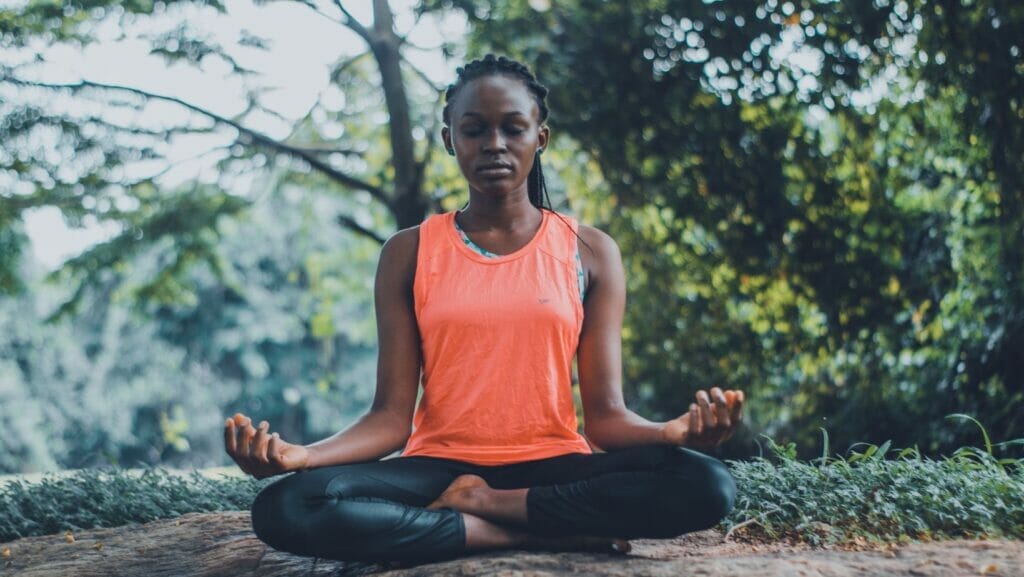
Yoga is an ancient tool that has been harnessed for its healing powers for thousands of years. Because of this and how expansively it’s been practiced, there are several different systems that have been created. Each system of yoga has its lineage that has shaped it; that path is typically known and honored as yoga is a tradition that was originally passed down through experience alone. One of those systems is called Kemetic Yoga.
Kemetic Yoga is a system of yoga that doesn’t subscribe to the idea that yoga originated in India. This system believes that yoga was being practiced in Ancient Egypt/Africa even before it was practiced in India. Kemetic Yoga is named after the place this lineage believes yoga to have originated, the part of Ancient Egypt that was known as Kemet. This area is now known as Northeastern Africa. Kemetic Yoga was popularized in the 1970s and this was due largely to the work and research conducted by Dr. Asar Hapi and Master Yirser Ra Hotep (Elvrid Lawrence) of Chicago. Their research supports the idea that yoga of Ancient Egypt predates the yoga of India that has been popularized in the West.
The people of Kemet are known for their inventions. Not only were the Ancient Egyptians the artists that created the pyramids, they also explored mathematics and the sciences. They were highly interested in self development. Kemetic yoga is heavily influenced by Ancient Egyptian Hieroglyphics depicting the pharos moving in and out of shapes. The asana shown, however, is different then what one might see in an Ashtanga or Vinyasa class. In fact, it wouldn’t be called asana at all; this form of yoga is heavily rooted in Ancient Egyptian and African influence. For example, the mantras used in Kemetic yoga are typically in ancient African languages. So, the physical practice of Kemetic Yoga is called Smai Tawi rather than Asana. Kemetic yoga postures are sequenced in a geometrical way that aligns the spinal column and emphasizes wellness from the perspective of the parasympathetic nervous system. It is believed that the practice of these poses is what brings the practitioners closer to enlightenment and the divine. It places emphasis on breath pattern and supports the philosophical ideas of self-development, self-discovery, and healing mind, body, and spirit together. The teachings of Kemetic yoga are centered around the ancient texts called Medu Neter.
Kemetic yoga classes consist of the same set of poses in the same order each time it is practiced. They are paced very slowly and are focused heavily on alignment. They emphasize the importance of control over one’s breath, body, thoughts, and emotions as they translate the word yoga into ‘control’. These poses are sequenced specifically to help the practitioner reach the highest state of enlightenment as indicated by the neteru, or deities. For Kemetic yoga practitioners, this comes in the form of divine spiritual knowledge and is represented by the symbol of uraeus, or an upright cobra, emerging from the third eye of the pharaoh.
In the United States, the hub for Kemetic Yoga is in Atlanta, Georgia. Founded by Master Instructor Yirser Ra Hotep, YogaSkills offers everything from kemetic yoga classes to kemetic workshops and yoga teacher training programs. Master Instructor Yirser Ra Hotep is the most senior Kemetic yoga teacher in the United States. He even teaches a course called “Science of Yoga” at DePaul University in Atlanta. The teacher training program at YogaSkills mirrors the expansiveness of Yirser Ra Hotep; their offering covers everything from the philosophy and origins of kemetic yoga to pranayama and nutrition’s role in yoga.
Kemetic yoga is an important topic to talk about as it emphasizes the role of Black and Brown people in the development of yoga, which can often be ignored in the Western world of yoga. Kemetic Yoga aims to help highlight the importance of the African influence on spiritual practices. It also emphasizes the idea that yoga is literally for everybody. It has been taken, practiced, and adapted to fit the people who need it. There is a form or practice out there for you and for everyone. Yoga is a tool for healing, a tool to ease suffering. At the end of the day, Yoga does not judge. Yoga asks you to live your most authentic life, regardless of the form or lineage of yoga that feels most authentic to you. It is in this way that we see the similarities between Kemetic Yoga and other forms of yoga that are derived from an Indian lineage. There is space for everyone.
